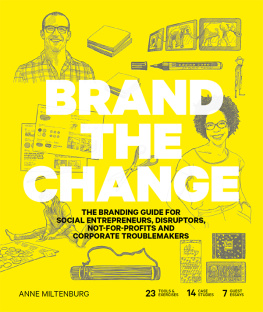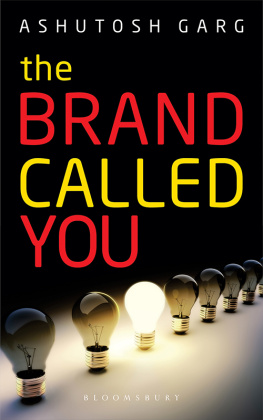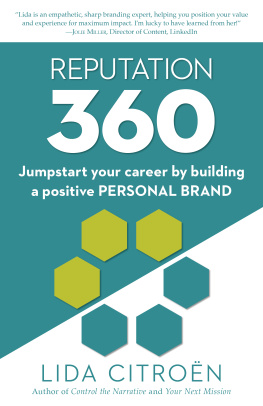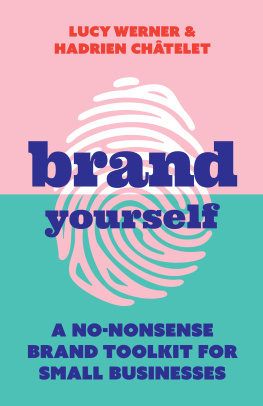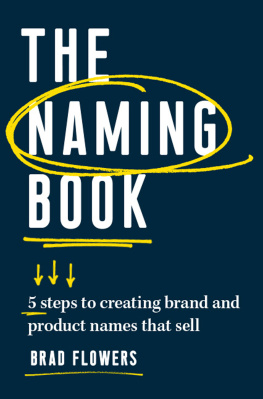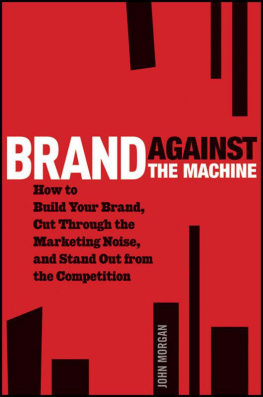A SHORT HISTORY

Branding proclaims allegiance.
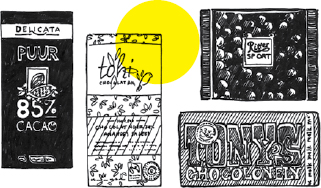
Branding makes you stand out from the crowd.
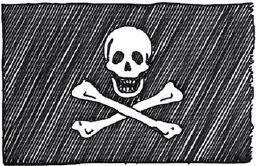
Branding advances your reputation.

Branding shows ownership.
Branding is an inherent human practice of all ages and all cultures, a way of showing who you are and what you stand for.
For ages, artists have signed their work in order to build their reputations. Silver and goldsmiths have developed marks of quality to instil trust. Knights and warriors were clad in the colours and symbols of their houses or tribes, proclaiming their allegiances, distinguishing them from the enemy, and advancing their reputations. The actual word branding derives from the branding of cattle in the United States in the 19th century to show and prove ownership.
Branding as we know it today came of age during the Industrial Revolution. Large-scale production and faster logistics meant that the distance between producer and consumer grew.
Word-of-mouth was no longer effective as a single tool for spreading a reputation. Especially for food, the safety and quality of products was a big question mark. Creating more recognisable identities for their products helped manufacturers build trust and loyalty.
By the mid-20th century, most manufacturers could no longer compete based purely on quality, as most goods on the market were roughly the same. So manufacturers had to develop another differentiating factor to make products stand out on the store shelf, a more emotional appeal, and advertising, marketing and branding came into their own. Today, branding is used by individuals, governments, activists, movements, political parties, products, services, scientists and celebrities to help guide people how to think and feel about them.
BRANDING: A DEFINITION
There have been a lot of books written on branding, and experts can argue about its exact definition until they are blue in the face. For the purpose of this book, we are defining branding as directing how other people think and feel about you.
Your brand is a catalyst that drives everything you do, from your actions to your communications, from your HR policy to choosing a new location for your office. Through your actions people will (unconsciously) build an archive of associations of your brand. By being aware of what you want to be recognised for by others and designing the right actions and communications which will build that recognition, you can actively guide how other people think and feel about you.
A brand is a person's gut feeling about a product, service or company. A brand is not what you say it is, it is what they say it is. Marty Neumeier, author
Brands exist in the minds of the people who interact with them.' Brian Collins, creative director,
BRANDING HELPS YOUR AUDIENCE
Every day we are bombarded by thousands of messages from thousands of people, organisations and products who think that we should buy them, read them, eat them, fund them. Brands help people choose. Developing a brand strategy means not leaving your audience's choice to chance, but having a plan about who you want on board to support you and how you can get them on board. You cant control it entirely, and neither should you want to, but if you dont frame how you want to be thought of, others will frame you right or wrong as they see fit.
BRANDING HELPS YOU
Internally, a brand provides purpose, is a compass for direction and a filter in decision making. Branding is choosing. You cant be everything to everyone. If you try to be everything to everyone you end up being nothing to nobody. A strong brand helps you take better decisions on new opportunities and creates a stronger company culture where values are shared and where actions are more aligned.

Branding helps your audience choose
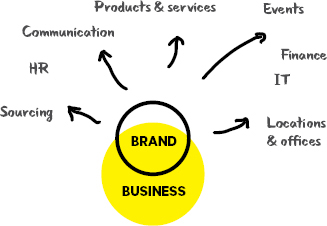
Branding helps you choose

BRANDING IS A MIND GAME
If branding is all about directing what others think and feel about you, then it is really a mind game. Your goal: to position yourself in the mind of your audience and to have their preference. Positioning is central to branding and crucial to your success. To be considered, you need to be known. To get on someone's mental shortlist it needs to be clear what you offer and for whom. To be selected, people will run through their mental archive to check what they know about you and if that resonates with them. If they believe you are trustworthy, offer the best solution to their need and that you are aligned on values, you can beat the competition. This journey of consideration and choice is the same for consumers looking for a bank, a social impact investor looking to fund startups, a recent graduate looking for a job or a person who wants to donate half of her end of year bonus to a good cause.
COMPETITION VERSUS COLLABORATION
Positioning yourself in a market helps you to be different from other players in the same field. Social enterprises often dont like to think they are in competition. To think that not-for-profits or social enterprises dont compete is an illusion.
WE ALL COMPETE IN SOME WAY FOR TIME, ATTENTION, INVESTMENT, SALES, GRANTS, AWARDS, SPEAKER LISTS OR TALENTED EMPLOYEES
Therefore, it is important to brand yourself in a differentiating manner. And that is not just needed to be competitive: it is also needed when you want to be collaborative. To achieve a better world, we need to work together. Having a strong positioning will make that easier. When your brand and another brand have a clear complementary service, you can team up. When you have shared values and a shared audience, you can create a partnership.

MAP OUT THE MARKET
What does your market look like and how will you position yourself? Create a market map, see .
WHAT BRANDING IS NOT
In an effort to change their reputations, many people, companies and governments turn to PR and branding. If all we do is try to influence perception through communication, it is simply propaganda. Nor should we go for merely cosmetic operations. For people and operations to be believable, communication must be aligned with action.

Branding is a great tool, but it does come with some dangers. Turn on your bullshit radar. Be sure to test every idea and phrase against reality. Dont be afraid of sharing a bold vision, but be honest, open and transparent with what you are trying to achieve. Always make it as compelling and original as possible. Keep it simple (simple is hard). Eschew jargon.

